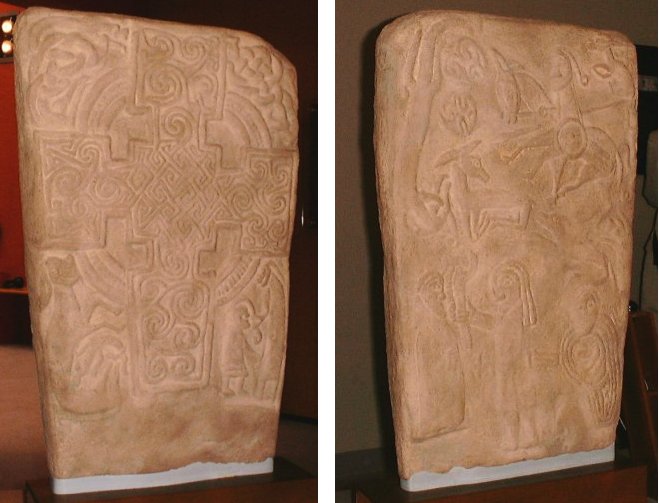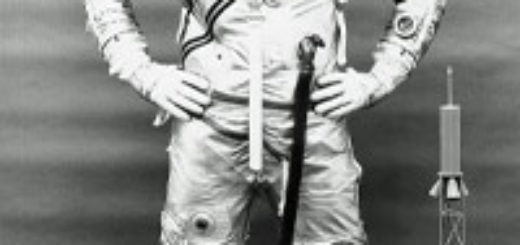Inchbrayock Stone: Pictish Samson Stone Carved With Biblical Symbols And Scenes
– The Inchbrayock stone, also known as the Samson stone is a remarkable and truly fascinating ancient artifact.
Found in 1849, in the graveyard of St Braoch’s Church, Inchbraoch, Montrose, Scotland the Pictish stone is carved with Biblical symbols and scenes. There are also several important Celtic symbols.
The stone combines Celtic and Christian beliefs. The Picts were an Iron Age society that existed in Scotland from ca AD 300–843. Not much is known about the mysterious Picts and yet, they played a vital role in the history of Scotland. These brave and determined people repelled the conquests of both Romans and Angles and won one of the most important battles in Scottish history.
Other than a copy of the Picts’ King list, they left no written record of themselves. The Picts used mysterious symbols that still haven’t been properly deciphered and their enigmatic language is now extinct. The carved stones the Picts left behind are today known as ‘Pictish Symbol Stones’.
One of them is the Inchbrayock Stone. The reason why it is also called Samson stone is because the stone depicts the biblical character Samson, as well Delilah. The stone is carved on both sides. The front is carved in a Celtic cross with intertwined beasts at the top.

The carvings depict two confronting figures. One of them is tall with a beast’s head. The person appears to be yanking the overlong hair of the smaller figure. Some have interpreted it as scene showing Delilah cutting off Samsons hair.
Both figures are wearing tunics, that of the smaller figure with a decorative hem and that of the taller figure with a belt decorated with key pattern. There is also a crocodile-like creature with an elongated body and back leg entwined together and two interlaced serpents.
A large crocodile seen from above with bulbous eyes and two smaller crocodiles stretch along the right edge of the slab, one seen again from above with bulbous eyes and the other biting the tail of a donkey foal. There is another foal being harassed by a hound across the middle of the slab. Between the foals stands a man armed with spear, circular shield and sword, riding an adult donkey.
At the foot of the slab on the left is a cleric in a cowled cloak being menaced by a man wearing a tunic and sword, with a curiously wrought club raised in his right hand.
At the bottom there are two figure that have been interpreted as Mary and her child.
The Inchbrayock Stone is an excellent example of how the Picts used as variety of symbols to convey important messages. The stone was donated to Montrose Museum, Angus where is it currently kept.
To avoid confusion, it’s worth mentioning that there is another Samson Stone in Scotland. It goes by the name Samson’s Putting Stone. It’s a giant rock that stands on the summit of one of the eminences of Bochastle, a couple of miles west of Callander.
According to ancient legends, this huge stone was thrown here by one of the Fingalian giants in ancient times. It was originally located upon Ben Ledi, nearly 3 miles northwest, and was one of several stones being thrown in a competition to see who was the strongest of the giants and Samson was the name of the one who threw this huge rock.
Samson Putting Stone has nothing to do with the Picts. The stone was most likely carried from the Glen Dochart region and left there when the ice retreated at the end of the last ice age.
Over the years, archaeologists have uncovered several intriguing stone created by the Picts, especially in northern and eastern Scotland, but it has not been possible to decipher the symbols and signs. Carved stones represent a unique legacy of the Picts. Many of them give evidence of advanced skills of artists; some of the stones with very complex decorative motifs depict Christian crosses and crescent or birds or animals, both real and mythical.
One of the most extraordinary Pictish stones is the Dandaleith Stone. Spanning more than 1.7 meters and weighing more than a ton, the Dandaleith Stone contains several undeciphered signs.



 Creators of mankind
Creators of mankind Description of “Tall white aliens”
Description of “Tall white aliens” Where they came from?
Where they came from? About hostile civilizations
About hostile civilizations The war for the Earth
The war for the Earth “Tall white aliens” about eternal life
“Tall white aliens” about eternal life Video: “Nordic aliens”
Video: “Nordic aliens” Aliens
Aliens Alien encounters
Alien encounters The aliens base
The aliens base UFO
UFO Technology UFO
Technology UFO Underground civilization
Underground civilization Ancient alien artifacts
Ancient alien artifacts Military and UFO
Military and UFO Mysteries and hypotheses
Mysteries and hypotheses Scientific facts
Scientific facts


















